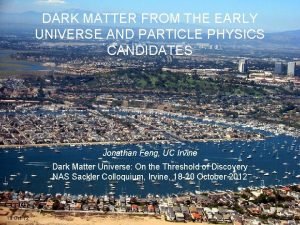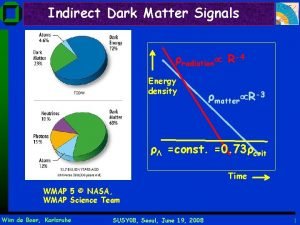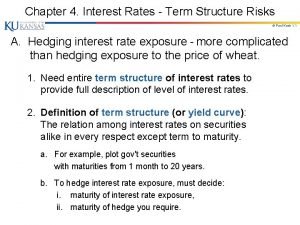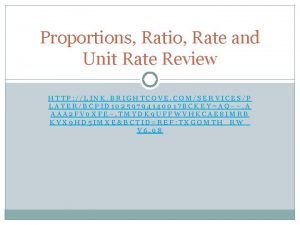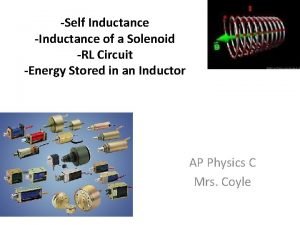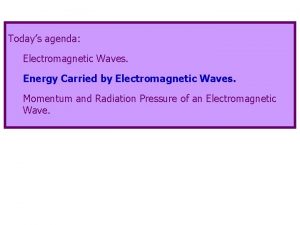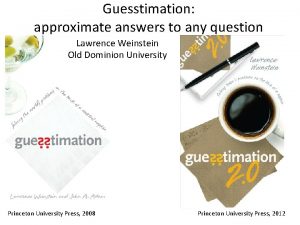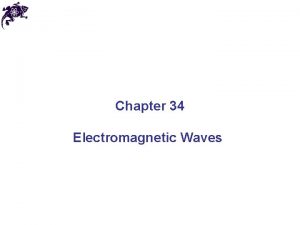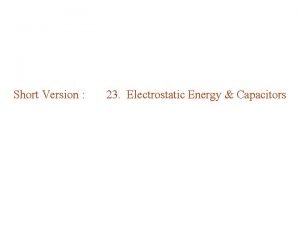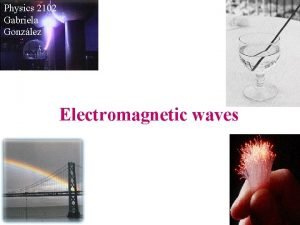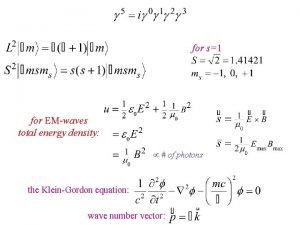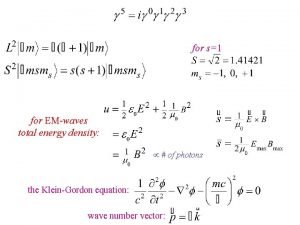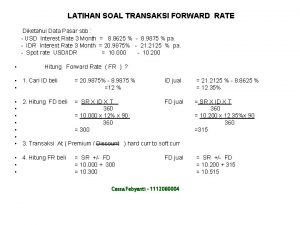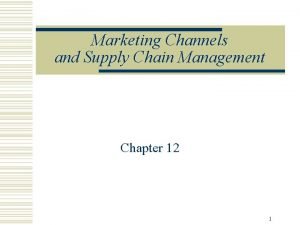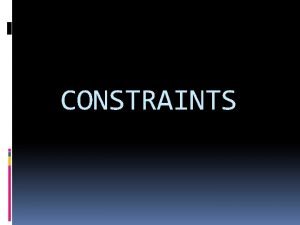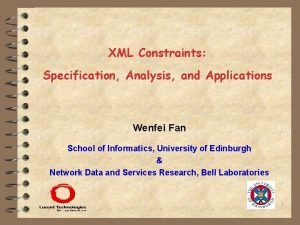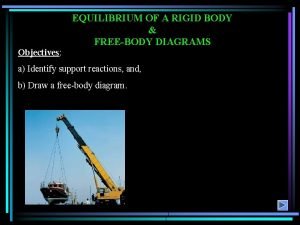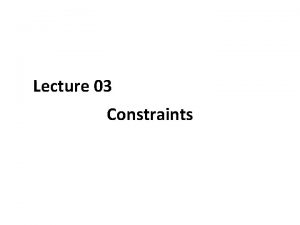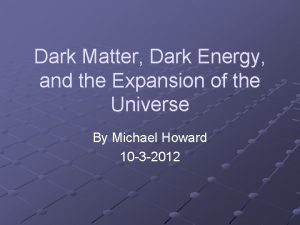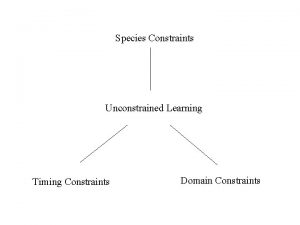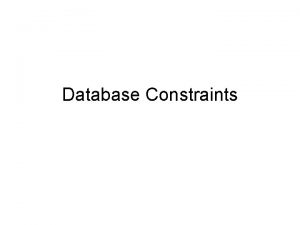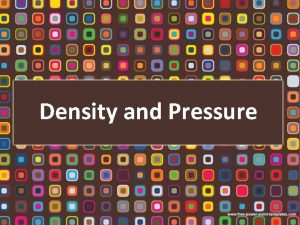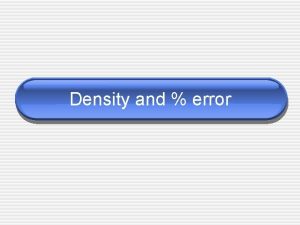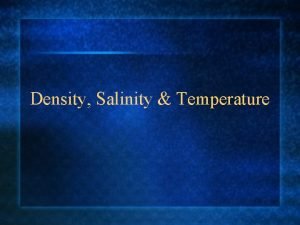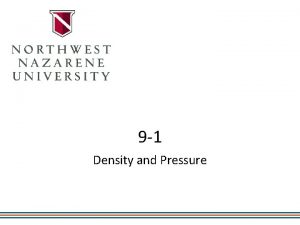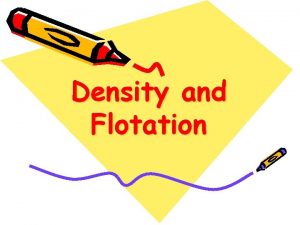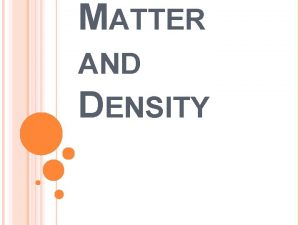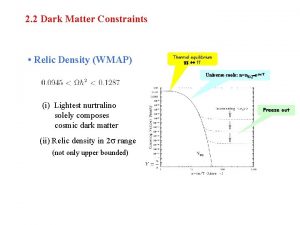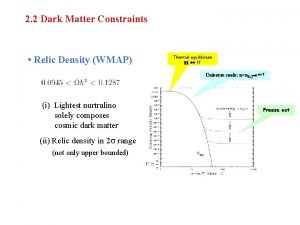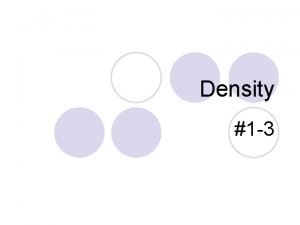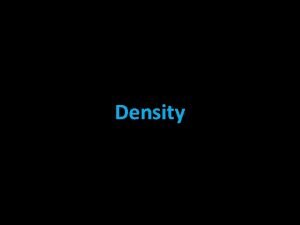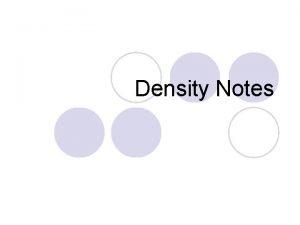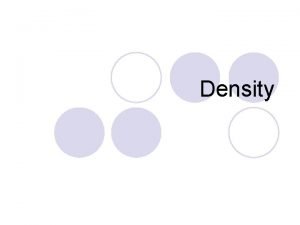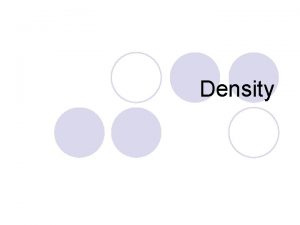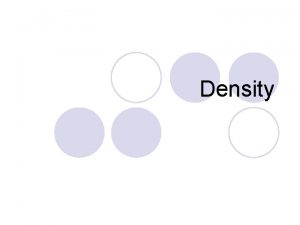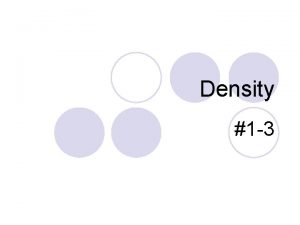Dark Energy Constraints from Expansion Rate and Density



































- Slides: 35

Dark Energy Constraints from Expansion Rate and Density Fluctuation Data Joseph Ryan, Sanket Doshi, and Bharat Ratra Monthly Notices of the Royal Astronomical Society, Volume 480, Issue 1, 11 October 2018 (ar. Xiv: 1805. 06408)

The Expanding Universe (1/2) ● The universe is expanding. Source: Cosmology, Daniel Baumann

The Expanding Universe (2/2) ● Physical distance xp changes with time: ● a(t) is the scale factor:

The Curved Universe ● k=0 ● k = -1 ● k = +1 Source: Cosmology, Daniel Baumann

The Accelerating Universe This expansion is accelerating today. ● ● Why? Source: Modern Cosmology, Scott Dodelson

The Friedmann equations ● The scale factor evolves by ; ● Where ;

Three Dark Energy Models (1/2) ● Define: ● ΛCDM (constant; has w = -1) ● XCDM (time-evolving; has w ≠ -1) ● φCDM (time-evolving scalar field with w = w(t))

φCDM (1/2) ● Assume a homogeneous scalar field ● with energy density ● and potential

φCDM (2/2) ● The field evolves by ● and the scale factor evolves by

Three Dark Energy Models (2/2) ● ΛCDM: ● XCDM: ● φCDM:

Data ● We collected 42 data points in total. ● 31 H(z) measurements from refs. [4] and [5] ● 11 BAO measurements from refs. [6]-[11] 4. ) Omer Farooq et al. , “Hubble Parameter measurement constraints on the redshift of the deceleration-acceleration transition, dynamical dark energy, and space curvature", 15 November 2016. ar. Xiv: 1607. 03537 v 2. 8. ) Metin Ata et al. , “The clustering of the SDSS-IV extended Baryon Oscillation Spectroscopic Survey DR 14 quasar sample: First measurement of Baryon Acoustic Oscillations between redshift 0. 8 and 2. 2", 21 May 2017. 5. ) A. L. Ratsimbazafy et al. , “Age-dating luminous red galaxies observed with the Southern African Large Telescope”, MNRAS, 467 (3), 1 June 2017. 9. ) Julian E. Bautista et al. , “Measurement of BAO correlations at z = 2. 3 with SDSS DR 12 Lyα-Forests", 27 March 2017. ar. Xiv: 1702. 00176 v 2. 6. ) Shadab Alam et al. , “The clustering of galaxies in the completed SDSS-III Baryon Oscillation Spectroscopic Survey: cosmological analysis of the DR 12 galaxy sample", 11 July 2016. ar. Xiv: 1607. 03155 v 1. 10. ) Florian Beutler, et al. , “The 6 d. F Galaxy Survey: Baryon Acoustic Oscillations and the Local Hubble Constant", 16 June 2011. ar. Xiv: 1106. 3366 v 1. 7. ) Ashley J. Ross et al. , “The Clustering of the SDSS DR 7 Main Galaxy Sample I: A 4 per cent Distance Measure at z = 0. 15", 21 January 2015. ar. Xiv: 1409. 3242 v 2. 11. ) Andreu Font-Ribera, et al. , “Quasar-Lyman α Forest Cross-Correlation from BOSS DR 11: Baryon Acoustic Oscillations”, 20 May 2014. ar. Xiv: 1311. 1767 v 2.

BAO (theory) Acoustic oscillations in coupled photon-baryon fluid ● Apparent in CMB and matter distribution ● Source: Advanced Cosmology, Daniel Baumann

BAO in galaxy distribution (schematic) Source: “Baryon Acoustic Oscillations”, ar. Xiv: 0910. 5224 v 1

Distances from BAO Can use DA and 1/H(z) to calculate other distances: DM, DV, DH ● Source: “Baryon Acoustic Oscillations”, ar. Xiv: 0910. 5224 v 1

BAO (data) rs = sound horizon distance ● rs, fid = fiducial sound horizon distance ●

H(z) ● Recall: E(z) can be calculated; H 0 is marginalized ●

Data Analysis (preliminaries, 1/2) ● χ2 ● Uncorrelated: ● Correlated:

Data Analysis (preliminaries, 2/2) ● Likelihood function: ● Marginalized likelihood:

Data Analysis (priors) ● Gaussian prior assumed for H 0. ● ● Two cases (from ref. [4]): – H 0 = 68 +/- 2. 8 km/s/Mpc (1 pc = 3. 26 ly) – H 0 = 73. 24 +/- 1. 74 km/s/Mpc For all other parameters, flat prior assumed.

Data Analysis (Best Fit) ● Record parameters pi that minimize: ● these are the best fit parameters. If two models have different numbers of parameters and/or data points, use ● ; ● k = # of parameters, N = # of data points.

● Two-parameter Models (1/2) Solid black: H 0 = 68 km/s/Mpc; Dashed black: H 0 = 73. 24 km/s/Mpc

● Two-parameter models (2/2) Solid black: H 0 = 68 km/s/Mpc; Dashed black: H 0 = 73. 24 km/s/Mpc

● Three-parameter XCDM (1/2) Solid black: H 0 = 68 km/s/Mpc; Dashed black: H 0 = 73. 24 km/s/Mpc

● Three-parameter XCDM (2/2) Solid black: H 0 = 68 km/s/Mpc; Dashed black: H 0 = 73. 24 km/s/Mpc

● Three-parameter φCDM (1/2) Solid black: H 0 = 68 km/s/Mpc; Dashed black: H 0 = 73. 24 km/s/Mpc

● Three-parameter φCDM (2/2) Solid black: H 0 = 68 km/s/Mpc; Dashed black: H 0 = 73. 24 km/s/Mpc

Best Fit Parameters

Conclusion The flat ΛCDM model is consistent with our data, although it does not always provide the best fit. ● Our results are consistent with (but not conclusive proof of) mild dark energy dynamics and non-flat spatial hypersurfaces. ●

Acknowledgments This work was funded in part by DOE Grant DESC 0011840. ● Thanks to Lado Samushia (KSU) and Omer Farooq (ERAU) for useful discussions. Thanks also to Tyler Mitchell (KSU) for help with computational resources. ●

References 1. ) Advanced Cosmology, Daniel Baumann. 2. ) Cosmology, Daniel Baumann. 3. ) Modern Cosmology, Scott Dodelson. 4. ) Omer Farooq et al. , “Hubble Parameter measurement constraints on the redshift of the deceleration-acceleration transition, dynamical dark energy, and space curvature", 15 November 2016. ar. Xiv: 1607. 03537 v 2.

References 5. ) A. L. Ratsimbazafy et al. , “Age-dating luminous red galaxies observed with the Southern African Large Telescope”, MNRAS, 467 (3), 1 June 2017. 6. ) Shadab Alam et al. , “The clustering of galaxies in the completed SDSS-III Baryon Oscillation Spectroscopic Survey: cosmological analysis of the DR 12 galaxy sample", 11 July 2016. ar. Xiv: 1607. 03155 v 1.

References 7. ) Ashley J. Ross et al. , “The Clustering of the SDSS DR 7 Main Galaxy Sample I: A 4 per cent Distance Measure at z = 0. 15", 21 January 2015. ar. Xiv: 1409. 3242 v 2. 8. ) Metin Ata et al. , “The clustering of the SDSSIV extended Baryon Oscillation Spectroscopic Survey DR 14 quasar sample: First measurement of Baryon Acoustic Oscillations between redshift 0. 8 and 2. 2", 21 May 2017.

References 9. ) Julian E. Bautista et al. , “Measurement of BAO correlations at z = 2. 3 with SDSS DR 12 LyαForests", 27 March 2017. ar. Xiv: 1702. 00176 v 2. 10. ) Florian Beutler, et al. , “The 6 d. F Galaxy Survey: Baryon Acoustic Oscillations and the Local Hubble Constant", 16 June 2011. ar. Xiv: 1106. 3366 v 1.

References 11. ) Andreu Font-Ribera, et al. , “Quasar-Lyman α Forest Cross-Correlation from BOSS DR 11: Baryon Acoustic Oscillations”, 20 May 2014. ar. Xiv: 1311. 1767 v 2. 12. ) David W. Hogg, “Distance Measures in Cosmology”, 16 Dec 2000. ar. Xviv: astroph/9905116 v 4. 13. ) Muhammad Omer Farooq, “Observational Constraints on Dark Energy Cosmological Model Parameters”, 14 Sep 2013. ar. Xiv: 1309. 3710 v 1.

References Bassett, Bruce A. , and Renée Hlozek. “Baryon Acoustic Oscillations, 27 Oct 2009. ar. Xiv: 0910. 5224 v 1. ● Title image: NASA/WMAP Science Team. Retrieved from https: //map. gsfc. nasa. gov/media/121238/index. ht ml ●
 Dark matter and dark energy presentation
Dark matter and dark energy presentation In the dark dark town
In the dark dark town Symbol of specific gravity
Symbol of specific gravity Planar density fcc 100
Planar density fcc 100 Linear density of atoms
Linear density of atoms What does arithmetic density tell us
What does arithmetic density tell us High density low density
High density low density What does arithmetic density tell us
What does arithmetic density tell us Flow rate and density relationship
Flow rate and density relationship Energy energy transfer and general energy analysis
Energy energy transfer and general energy analysis Energy energy transfer and general energy analysis
Energy energy transfer and general energy analysis Cube of stabilized dark energy
Cube of stabilized dark energy Dma dark energy
Dma dark energy Real vs nominal interest rate
Real vs nominal interest rate Plant growth index
Plant growth index Option adjusted spread
Option adjusted spread 1 year forward rate formula
1 year forward rate formula Difference between rate and unit rate
Difference between rate and unit rate Marriages and families changes choices and constraints
Marriages and families changes choices and constraints Marriages and families changes choices and constraints
Marriages and families changes choices and constraints Inductance of coaxial cable
Inductance of coaxial cable Energy density of electromagnetic wave
Energy density of electromagnetic wave Xkcd uranium energy density
Xkcd uranium energy density Hertz experiment electromagnetic waves
Hertz experiment electromagnetic waves Electrostatic energy
Electrostatic energy Magnetic energy density
Magnetic energy density Intensity of electromagnetic radiation
Intensity of electromagnetic radiation Energy density formula
Energy density formula Formula of energy density
Formula of energy density Cap rate interest rate relationship
Cap rate interest rate relationship Transaksi forward
Transaksi forward Real exchange rate formula
Real exchange rate formula Channel design decisions in marketing
Channel design decisions in marketing Examples of non holonomic constraints
Examples of non holonomic constraints Specifications and constraints
Specifications and constraints Improperly constrained
Improperly constrained











